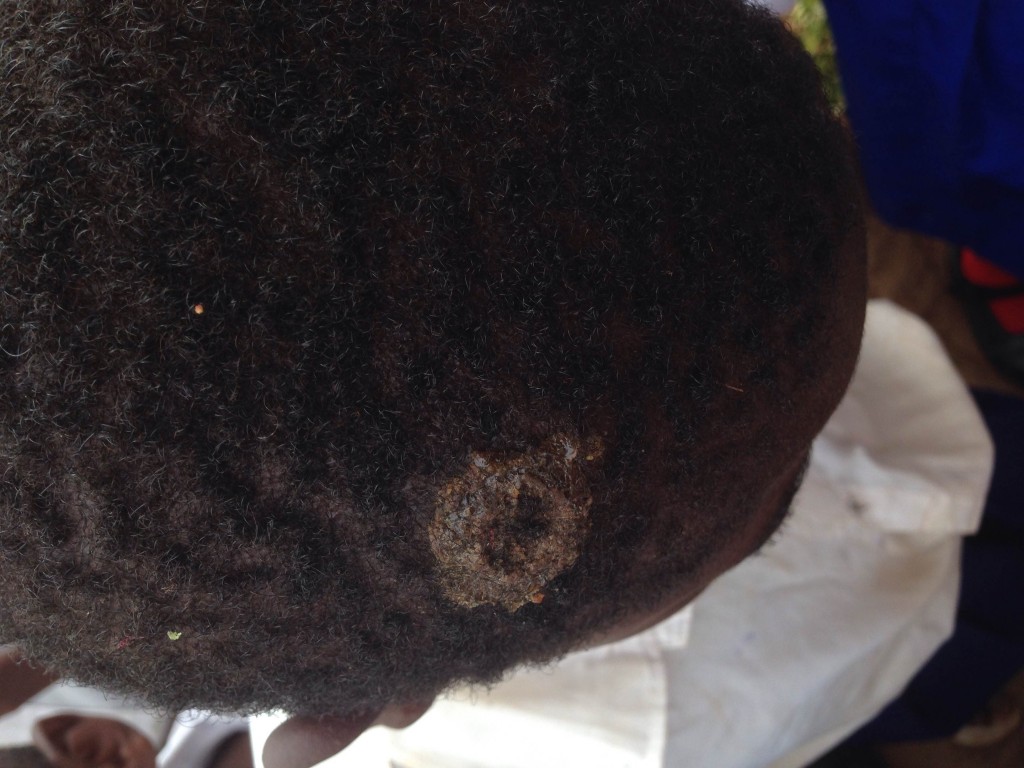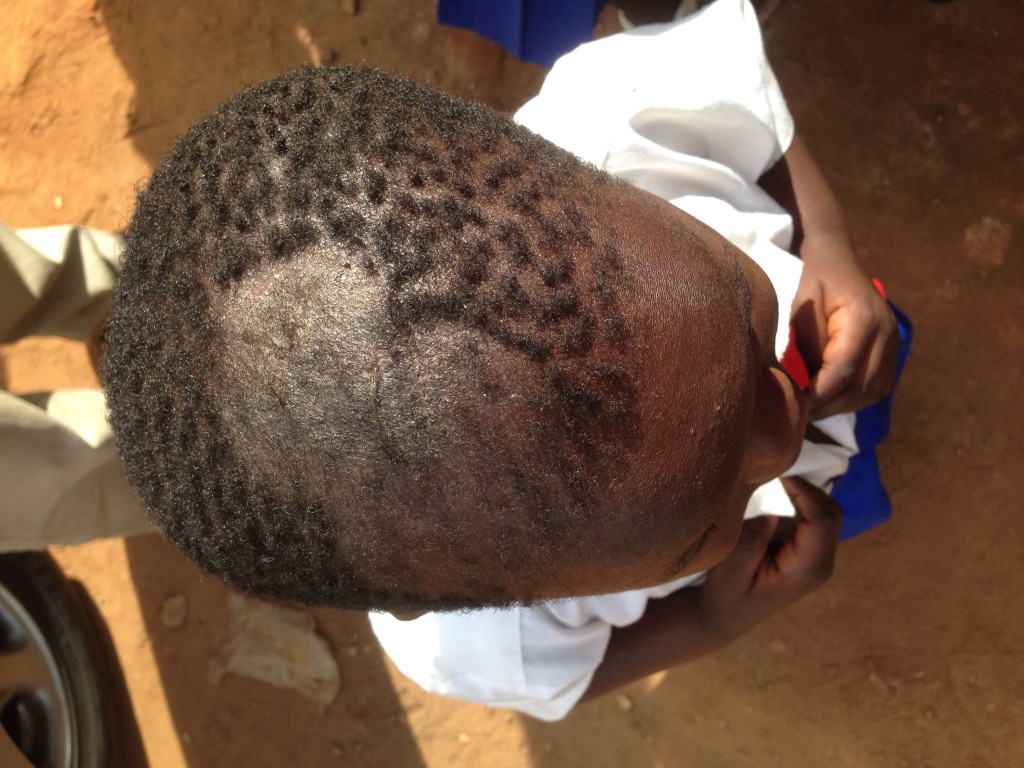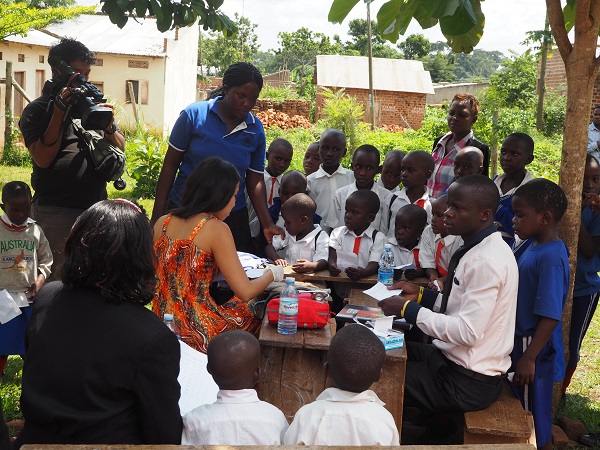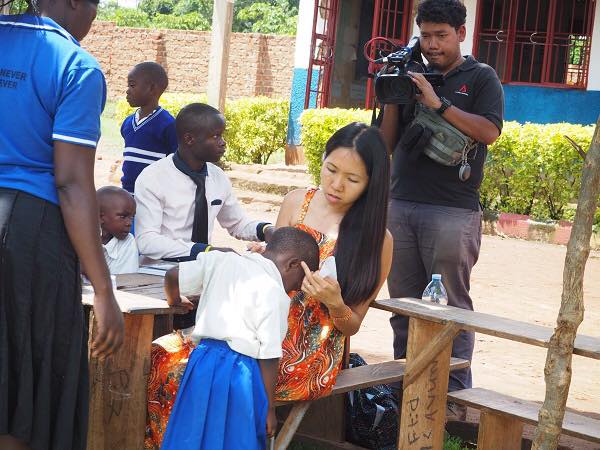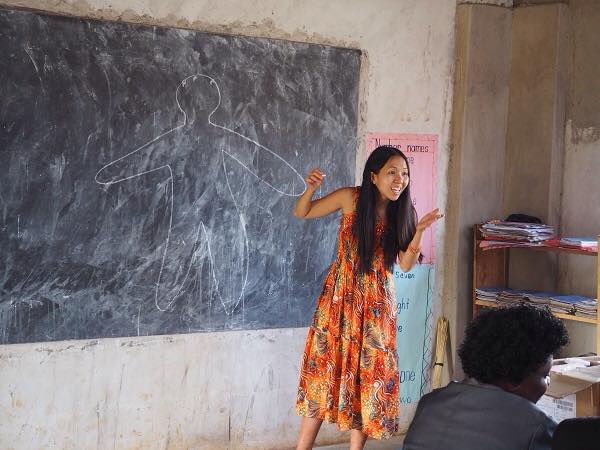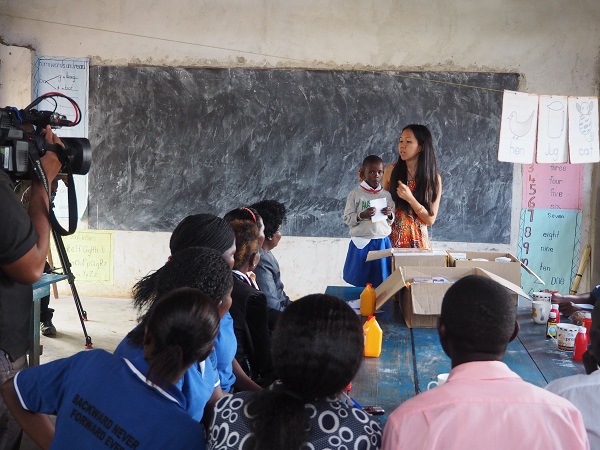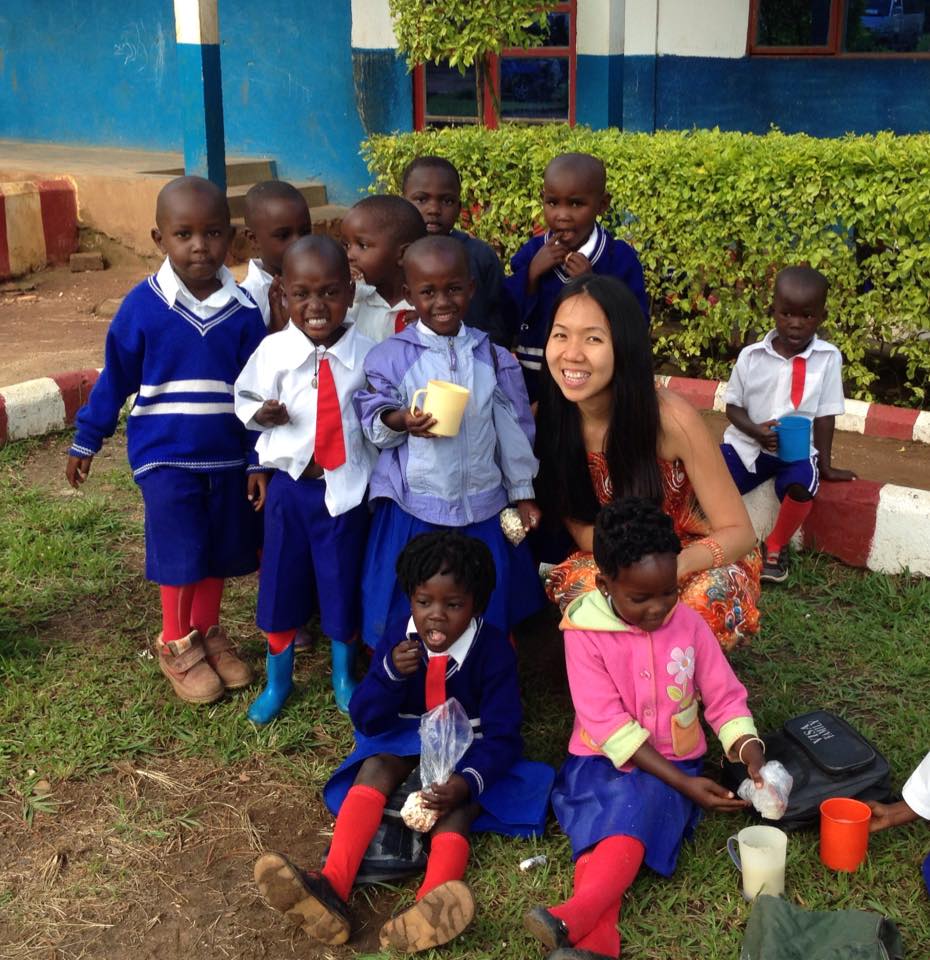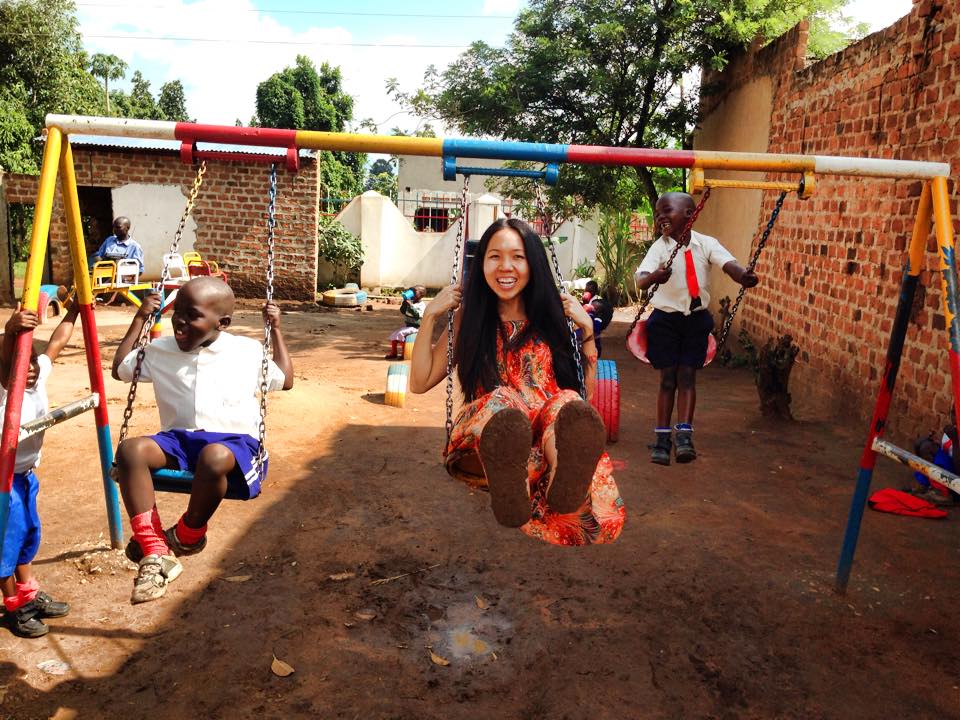Like a child who had never known the ecstasy of being on a swing, I refused to do it. Just thinking about it gave me butterflies in my tummy.
What if I did it wrong? What if I hurt someone? Maybe there’s another older missionary doctor who’ll be able to do it next time.
It seemed safer, not to do it at all.
When people had told me that the needs on the mission field would stretch my abilities, I tried not to over-think it. After all, if I could find reasons to justify that I was not knowledgeable, experienced or well-equipped enough, the pressing needs of reality surely would evaporate.
How wrong I was.
As a medical doctor who had been on medical relief trips overseas, I should have been confident embarking on this task.
But I was not.
Here in Africa as a young doctor, unfamiliar with the repertoire of tropical diseases here, I felt on my own. Faced with the thought of overwhelming needs and demanding crowds, without a medical team to assist me… I was afraid.
A mental block as high as a fortress built its way around my mind: People here don’t have health cards, they don’t know their allergies- what if I prescribed a drug which caused a serious allergy? What if the side effect was life threatening? How would that jeopardize the work done by the leaders here?
As the months crept by, I tried to make the best use of my strengths to impact the 900 schoolchildren in the 3 community village schools affiliated to our church back home in Singapore, careful not to overstep the boundaries I had rigidly circumscribed for myself out of fear.
According to the World Health Organization guidelines, regular deworming improves school attendance, cognitive development and the nutritional status of school children, where infections can be most intense. Many of the children from these schools come from overcrowded homes in poor villages, with poor sanitation. As God opened doors for me to link the schools up with the Ministry of Health in Uganda for community deworming and vitamin supplementation programmes, I was thrilled to see the new partnerships blossom.
Each school would now receive regular intestinal deworming pills and Vitamin A supplementation from their local health authorities twice a year, for free. With the schools now plugged into a local health system, they were now empowered to be self-sustainable, instead of relying on us or foriegn aid.
Nonetheless, even as the school principals poured their gratitude unto me, I knew this did not target the “worm” they desperately wanted to get rid of- ringworm.
“Ringworm”, a classic misnomer, is no worm at all. It is, in fact, a fungus, that grows in ring-like shapes all over the body, causing some of the most persistent infections, especially in children living in conditions of poor sanitation.
In our sanitized, developed world, ringworm earns its notoriety from causing “athlete’s foot”. However, in the raw, rural setting of Africa, it can wreck havoc on one’s face, body, groin and scalp.
Back home in Singapore, I had never seen a single case of serious tinea capitis (ringworm infection of the scalp). Here in Africa, however, almost every village kid has the most diverse flora and fauna speckling his crown, causing dandruff, hair loss, oozing pustules and occasionally hardened craters of pus attracting houseflies encircling them like vultures.
Not wanting to dispense medication I was unfamiliar with on a wide-scale community setting, I started first with suggesting antifungal shampoos and creams- surely those were safe.
After consulting dermatologists and my own research, however, I learnt, that with hair follicles penetrating deep into the skin, these nasty scalp infections cannot be treated topically. Only Griseofulvin, an oral tablet, could cure the stubborn root cause. But it needs to be weight-adjusted for its dosage, and though it is deemed the safest antifungal, it still could cause a host of side effects I was not ready to handle.
Where we are, even a weighing machine can be a headache to find.
Did I really have to prescribe this drug to a whole community of schoolkids? What if a child got really sick from it due to an allergy? What if he developed rare hepatotoxicity, or anaphylactic shock? What would I do?
Whether I had experience or not, was “well-equipped” with a medical team or not, or knowledgeable enough, the dire needs of the children remained.
One day, at a visit to the village school, a little girl with an open wound the size of a large strawberry on her scalp, oozing with yellow pus through a mini volcano of crusted pus, sat sullen, isolated from her friends because of the horrible stench.
Infection and hair loss caused by severe tinea capitis (scalp ringworm)
As I cleansed her wound, I realized I could not do nothing. Not acting out of a personal discomfort of dispensing treatment I had never done before, was simply… selfish.
It was another missionary doctor who candidly shared with me, “Ha! On the mission field, I usually read up online and figure out the treatment along the way!”
It reminded me of several long-term missionary surgeons on the field who had confessed to me before, about operating on patients with a surgical textbook open nearby. After all, with “novel conditions” like a femur crushed by a hippo’s merciless bite, one cannot rely on experience surely!
At times, it is not how qualified we think we are (or are not), but how willing we are to help, that makes the difference.
That early morning, I awoke at 4am, nervous with anticipation. As we drove to the village school with boxes of medication, a borrowed weighing machine and scribblings of the day’s packed schedule, I did not know what to expect.
Having the Channel News Asia crew trailing behind us with their 8-seater vehicle and fancy equipment to film their documentary on Singaporeans making a difference abroad, only added to the anxiety I carefully concealed.
As soon as we got to the village school, however, my worries dissipated, slowly but surely.
The transient dark clouds never made their debut- God held up the skies for us for the outdoor health outreach.
The children were ecstatic to see us, shouting “YES!” gleefully when the principal asked if they had wanted to see a certain “Doctor Wai” that morning for their “itchy heads”. As Cliff and I entertained the children with a health education performance with “Dirty Bear and Clean Rabbit” using Bear and Bunny hand puppets, they bowled over with laughter.
Instead of the messy, rowdy crowds I had imagined, the children were patient to see me. Not having a medical team with me gave the teachers the beautiful opportunity to be fully involved in weighing the children, lining them up, recording their medication dosages, cutting the tablets, administering the antifungal tablets, and shampooing the kids’ heads with antifungal shampoo.
The teachers, now fully involved in the programme, were fully engaged as I shared basic ringworm prevention strategies, such as sunning their bedsheets regularly and reminding the children not to share combs, sponges or towels.
Heh, a “gingerbread-man” kinda sketch!
At the end of the day, not a single child suffered from any undesirable side effects. The first aid kit and stethoscope I brought for good measure never needed to be used.
As I saw the smiles on the faces of the children and teachers, I learned again, that it is not how much we know or how much experience we have which make us truly useful, but how willing we are to be used by God that will determine the impact we have and the difference we make on those around us.
Just like a child who has savoured the ecstasy of playing on a swing, trusting in God can be just as deliciously joyful and fun- only when we choose to put our own anxieties aside.
Truly, when we learn to let go of our fears about what we do or do not know, and simply focus on the heart of why we do what we do, trusting God to use us as He does, oh, how there is joy unspeakable.
The Lord is my strength and my shield;
in him my heart trusts, and I am helped;
my heart exults,
and with my song I give thanks to him.
– Psalm 28:7

